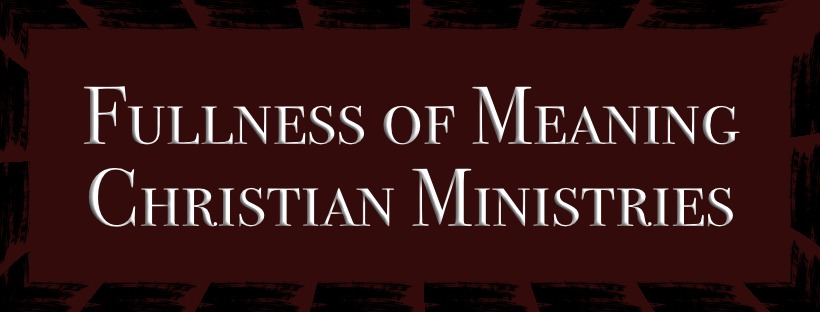Epithets for angels, Satan, kings, priests, queens and gods
One of the earliest sentient cultures of great intelligence was the Kartuli culture. The Kartuli culture spoke a language that was shared with Sumerian. Kartuli language, or Kartvelian, is now known as the modern Georgian language. This shows you how old Georgian is!
This highly evolved (in excess of 300,000 years) Kartuli or Kartvelian linguo-culture gave the Sumerians a meaningful relationship between nature and the heavens. Kartvelian culture made sacrosanct the Sumerian Language, culture and practices. Prior to the Kartvelian influence, the Sumerians, seemingly, were just an agrarian culture.
One can see an ‘imprint’ from the Kartvelian’s language to the Sumerians when one looks at the etymological origins of Sumerian inherited words. Such borrowed words are seen later in the vocabulary surrounding the Sumerian agricultural, religious, and political practices. That is, commonly observed objects with associative names from the Kartuli or Kartvelian speaking peoples, most certainly lent their vocabulary to the Sumerians. Suc examples of Kartvelian words loaned to the Sumerian vocabulary are: “xe”-“tree”; “Kakalli”-“walnut”; “Ugula”-“overseer/ “heartless”; etc. —-as we shall see later, are from a narrative —-i.e., a similar story to the “nag” or ‘ugly ones’ who guarded the Paradise or the ‘encamped garden’.
The beautiful language of Sanskrit has also been affected by Kartvelian such as seen in the word, “Angira”-“Angel” (nasal + gutteral + rotex formula) shows old Indo European ties with the “Angelos” of the Greek language and the Sanskrit, “Angira” -the fire keepers/ ‘brazier (hot oven/ thing) watchers’, NG/ naga/ snake people. The (non-mythological) Oxford Sanskrit Dictionary gives us many word pictures concerning these beings as, “serpents with human faces”. Once such being is the “Angarika” (masc.) – “charcoal burner”; “angarasa” – “fire keepers”. Whether placement of the -gn- or -ng- occur in the “anga” or “agni” to create the shape of the meaning of the Sanskrit ‘fire burners’.
I am beyond perplexed as to the Cain culture that travelled east of Eden into the Biblical Nod, if one is used to reading their Scripture as a serious historical and geographical reference. A major city just under 30 miles South-East of the 3 regions of Nod (Noqdi) do we find thriving Ardabil, Iran.
The 3 Noqdi or “NOD”:
1)Naqdi ya Sofla is 29,7 miles North-West of Ardabil
2)Naqdi-Olya is 24 miles N.W of Ardabil and finally
3)Naqdi-Bala is ca. 20 miles N.W of Ardabil.
One can see the Proto Aryan root word, “Nag”, carried through in the Persian. Other archaic Indo Aryan and possible Mongol, Old Japonic-Altaic words could and would retain such names as those of the Khan-ite clans as in Cain-ites. As Cain was given a mark that all men would know who he was and that he would be distinguished from every other man on earth it interests me to who these naga people are. It is of great importance to study the “naga” clans or naga people who keep a cauldron of fire burning day and night. Such a naga/ Cain-ite/ Khanite might represent something of the offspring of Cain as a cursed race. Was he a giant based on the sexual intercourse of a fallen elohiym? Was the Satan and Eve story another account of the ‘fallen sons of God/ fallen angels interbreeding with the Daughters of men (the Huwites/ Eve-its/ Chaiva clan)? Was all of the earth at this time an Eve culture without a Patristic warring leader? Was Cain the offspring of Satan and Eve (the misunderstanding of reproduction during this time of antiquity would have possibly played into the Goddess myths which gave way to the belief in Parthenogenesis {‘self birthing’} at that time, and the “Blessing” from either Satan or YHVH)? I think this is a possibility.
Another reference to the conjugal relation of Satan and Eve resides with the Sumerian text of Inanna and Enki where the Serpent-god imbibes a type of soma libation with Inanna or the Eve (“Life-Bearing”) antagonist of the story. In the story, such drunkenness led to coitus between the Sumerian Inanna and Enki (Eve and Satan) in the story. Was this the Genesis 3 account? I find the ‘fruit’ of the garden to very well have been shared with not just Adam and Eve but of the Serpent-god and Eve.
I am beyond perplexed concerning the Sanskrit/ Rig Veda collage’ of ‘priest, snake, fire, copper, ugly, outcast, and watcher. All of these branding terms seem to fulfill an archaic-mosaic for me concerning Eden, the Fall, The Garden, The Cherubs, The Most High Angel that Fell, and the borrowing later of these signs, symbols and metaphors.
Similar themes of Enki/Naga are found in the Nachash in the Hebrew, with the name and function of the “Serpent” in the “Pairidaeza (Persian: “park land”)” or technically, the Greek which continues the Farsi: “para” = ‘around’ + “deisos” = ‘garden’/ ‘park’ = *enclosed garden*
As the “Cherub”, “Griffin” or “Kerabou” (gutteral + rotex + labial formula), or Chorobai as mentioned throughout Sumerian, Akaddian, Babylonian and Persian myth mention the “Guardian” as the hired one. He was the Watcher. The “Igigi” (eye + eye {or: ‘intense eyes’; ‘maloik’ or ‘malacchio’ in Italian}) in Sumerian means, “watcher”. Igigi also means, “to watch with rapacious eyes”. One might look to ‘rowb’ in the Hebrew for “the Raven” or “eye of the Witch” “Eye of Odin {Adon/ Adonai/ Atum Ra})” over Eve and Adam. These were the first two protagonists for the narrative in the “enclosed garden”. Norse myths are directly related to Georgian and Sumerian myths. It is a wonder that the Vikings spread such a relatable myth to the Sumerian tales and Biblical accounts. Such a beautiful tapestry of history and language!
Parallel accounts of the Biblical Sons of elohiym (earliest redaction of the Biblical account is found in Job 2 and 3) are the Mesopotamian creation gods-the Anunnaga (Enuma Elish/ An = “heavenly” / Naga – sons of An, i.e., Anunnaki) had their “fall”.
Hebrew linguistic cognates:
I find that the high and Lifted Cherub of the Biblical Genesis account became the cursed belly crawling “serpent” of the Garden of Eden after his dialogue and temptation to fruition with Adam and Eve. This very serpent was called in the Hebrew text, a Nachash (Nach-Nag). We see the Nag in India as having Serpent God parents who went into the sea, as their myth goes. We see the Nephilim in the Hebrew as the Fallen Ones to match that of the Giants who terrorized the earth. These Giants are also found in every myth, religion of antiquity, tale, fable that one would like to read about.
From a distant past we still retain a yezdi clan in Zagros Mountain region which would have bordered southern Eden in its day. They worship Melek Taus, the “Peacock King” or “Shaitan”. They say that he only wanted to be close to Elohiym, the I Am. As the I Am kicked Melek Taus off His holy mountain, he took ⅓ of the angels or gods or elohiym with him. Forever worshipped, Melek Taus’ clothing, headdress, rituals, totem poles (Pole or Tree of wisdom in the Garden where the Shaman witch reclined) is found in the earliest Native American Indians.
Concerning the utmost antiquity of the Naga, Cain-ite, and Steppe culture Khanites
that I have researched, one can reach to the Kartvelian language (reaching back 5 to 6k B.C.) to find the word, *na-qsir. Na-qsir means, “coal”. “Coal” was the term necessarily used in explaining the function of the ‘coal burners’ or “Angira” or “Angels” of the old world in the Northern plains of ancient India, Pakistan, and Iran.
The earliest Cainites did indeed smelt metals and work to make weapons and musical instruments. We do find his son’s name, Irad (“descended”; “fallen down to earth”), eponymously named in the very first city-state on earth, “ERIDU”. This city-state was generated by a secret guild of metallurgists who began the same production that they started in Nod or Noqdi. The ‘descended’ to an area between the Tigris and Euphrates. One can Google-Earth this area (just type in Eridu, Iraq). It is beyond haunting when the satellite’s view brings you down to a little square no bigger than a few football fields, yet, this is a remnant time immemorial—our very beginnings.
So, in our possible Satanic genes carried from Cain to us, wars Christ against our very urges every minute. Cain might be the generator of all Nations through his Satanic craft, though, practical and burdensome at the same time, his craft is handed to us to forge through this world. Funny how the Garden of Eden was ‘forged’ by God to retain Peace and it is in Cain that we bear the mark to forge those things which are unnatural to make a ‘living’.
Would it surprise you to also know that “Cain” meant, “Forger” (QN -Hebrew root: “to forge”, “to join”, “to smith”), or ‘one who is a Smithy’. I am convinced that the archaic Kartvelian gave root to the word for angel, for there is nearly nothing to be found on ‘angel’ in the Greek or Hebrew Theological works I have read that satisfy me. Such practices were done in secret and held as magical. Only a select few could be revealed this metallurgy for if fallen into the wrong hands, the enemy could learn to make weapons to fight back. Words to form images: “fire, seraph, six wings, flying, sparks, coal, Holy, Temple, God’s *Train*, veil, etc “ are ‘fired’ into my brain as were the ancients who thought in terms of images which carried their innate logic and not the logic of Aristotle’s deductive syllogism.





